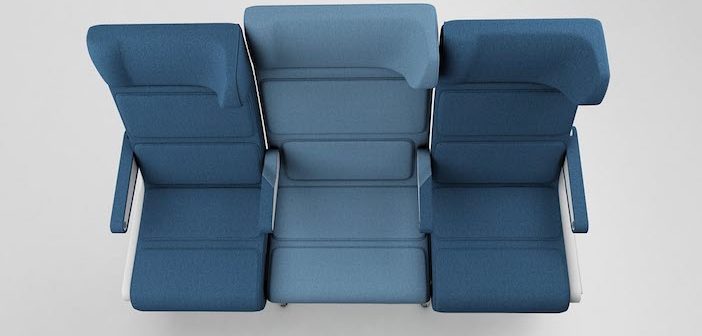Molon Labe pitches its S2 Stagger Seat for Qantas’ Project Sunrise

Qantas has turned heads with its order for 12 Airbus A350-1000s, being brought on fleet to enable ‘Project Sunrise’, with non-stop flights of up to 20 hours to Australia from any other city from late 2025. The airline is fitting First Class suites with separate beds and a lounge chair, next-generation business-class suites, new premium economy seats pitched at 40in, and a new economy seat pitched at 33in. However, while the premium experience is the talking point, the economy experience is the potential pain point.
While it may be too late to win the Project Sunrise contract, Molon Labe Seating, a Denver-based aircraft seating company with some innovative designs for main cabin travel, is keen to tell Qantas (and other airlines planning ultra-long-haul routes) that its S2 Stagger Seat is the “only viable” economy and premium economy seat for a 20-hour flight.
As its name would suggest, the seat design has a staggered layout, which means passengers’ shoulders and elbows are no longer adjacent but are instead offset fore-aft and vertically, increasing personal space, especially above the waist.
A key design feature is the middle seat: a difficult proposition on a 20-hour flight. In a triple, the S2’s middle seat is 5in wider at the shoulders than the outboard seats, without reducing the widths of the aisle and window seats. Passengers can also book a seat to suit their height, bringing comfort and DVT benefits, with three seating heights per triple available for booking (18.2in, 17.2in and 16.1in).
Another unappealing prospect is 20 hours of subtle ‘armrest wars’ as passengers nudge their way into extra inches of territory. The armrests of the S2 are also staggered so each passenger has dedicated armrest space that cannot be stolen by neighbouring passengers. The armrests are not just staggered in height, but also sculptured towards each passenger.
Sleep is another obvious factor in ultra-long-haul, so the large asymmetrical headrest can be rotated past horizontal so the occupant can rest their head to the left or right in a cradled position. It can be rotated 240° from left to right to serve as a headrest, and also as a barrier to the adjacent passenger (if needed), whilst the other side of the headrest offers unobstructed access to adjacent passengers (if desired).
The inventor of the seat, and CEO of the company, is Hank Scott, a former Royal Australian Navy officer/aviator with a Masters degree in ergonomics. He states that the offer of three different seating heights is important for passenger comfort: “Studies have shown that pressure and heat distribution along the thighs/buttocks are two of the most important comfort factors on long-haul flights. A tall person in a short seat will have concentrated pressure and heat towards the rear of their thighs, whilst a short person will have uncomfortable pressure near their knees where the lower thigh takes the weight of the lower legs”.
The aim of an ergonomically designed seat is to have the thighs and buttocks parallel to the seat pan to spread the body weight evenly and allow for maximum dissipation of body heat.
The S2 has an optional asymmetric recline feature whereby the entire seat can be reclined, or just the left or right side. “Most passengers reclining their seats with the aim of sleeping will rotate their upper torso as soon as they recline. This feature along with the rotating headrest will provide the best chance for a passenger to get into a comfy sleeping position,” added Scott, who has regularly flown economy class across the Pacific for the past 30 years.
Scott says that Molon Labe Seating could deliver its seats to Qantas in time for the inaugural Project Sunrise flights. Will his pitch be successful? Watch this space…
